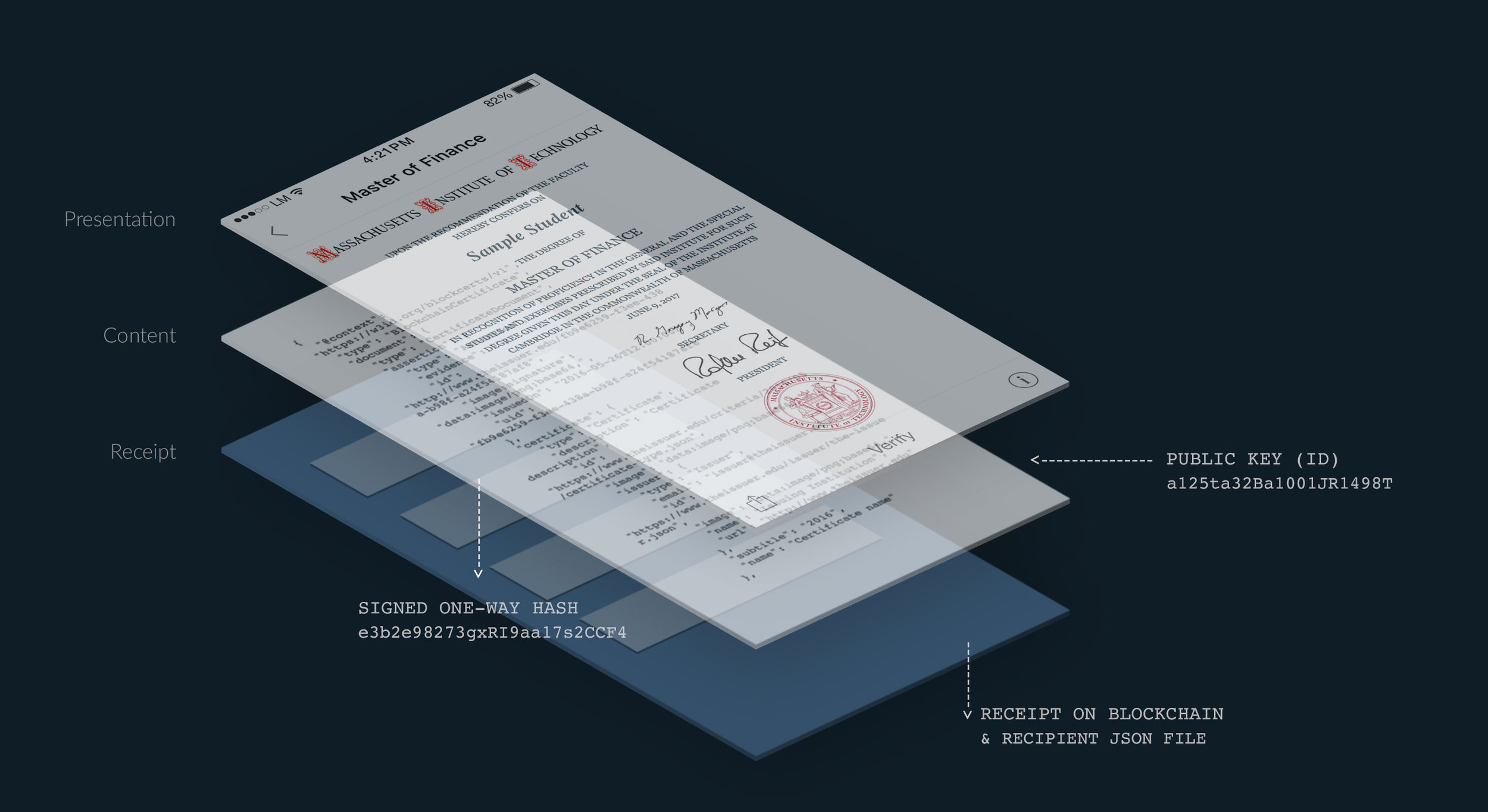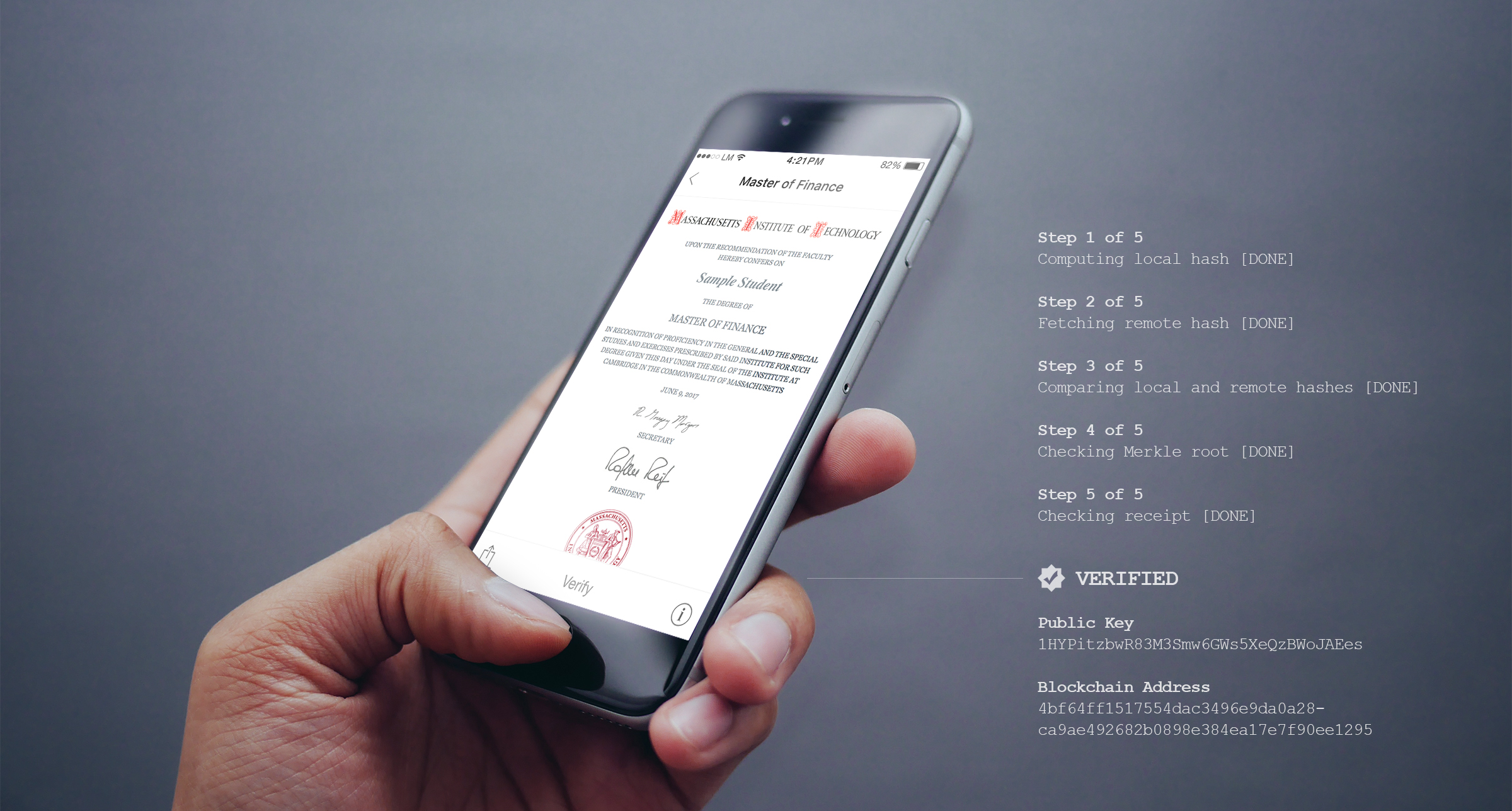One of the key benefits for students is that they can prove to employers or other schools that they have an MIT diploma. The third party can verify the authenticity via a portal.
Image: MIT
MIT has launched Digital Diploma, a pilot program that offers students the ability to receive their certifications on their smartphones via an app that uses Bitcoin’s blockchain technology.
The app is called Blockcerts Wallet; it helps students to get a verifiable, tamper-proof version of their diploma, which they can show to employers and schools. The institution said that this year, 111 graduates became the first to receive their digital diplomas.
For the development of the technology, MIT partnered with Learning Machine, a Massachusetts software company.
“MIT and its partner Learning Machine use the blockchain to protect and verify your diploma. This is the same technology that allows bitcoin to be decentralized and secure. Your coded diploma is sent to you by email as an attachment, so you can store it in a secure place of your choosing. You can also store and view your diploma in the mobile app.”
Digital credentials are not new, with most online educational platforms —like Coursera, edX, and Udacity— offering them. However, the MIT says that its program is groundbreaking because it gives students autonomy.
“From the beginning, one of our primary motivations has been to empower students to be the curators of their own credentials. This pilot makes it possible for them to have ownership of their records and be able to share them in a secure way, with whomever they choose,” stated Mary Callahan, Registrar and Senior Associate Dean.
The idea of using blockchain to power a certification system came from Callahan, who thought it could provide permanence and a high level of security, and Philipp Schmidt, the director of learning innovation at the MIT Media Lab, who had already been experimenting with the technology.
Then, Schmidt’s team and the company Learning Machine started to collaborate to build the pilot program.
“It was the perfect confluence: technology developed at MIT and a vendor who was aware of MIT’s culture as a community that values learning, at a time when a comprehensive record of lifelong learning was an evolving need,” said Callahan.
Chris Jagers, co-founder and CEO of Learning Machine, said that although there are several blockchain types, they chose to use Bitcoin because it prioritizes security instead of speed or cost.
One of the key benefits for students is that they can prove to employers or other schools that they have an MIT diploma. The third party can verify the authenticity via a portal, which “uses the blockchain as a notary, locating the transaction ID (which identifies when the digital record was added to the blockchain), verifying the keys, and confirming that nothing has been altered since the record was added.”
The team plans to expand the Digital Diploma pilot to other MIT programs, and in the future it might be possible to link credentials and degrees from different institutions into a new meta-record.
This article from Observatory of the Institute for the Future of Education may be shared under the terms of the license CC BY-NC-SA 4.0 
)
)



)